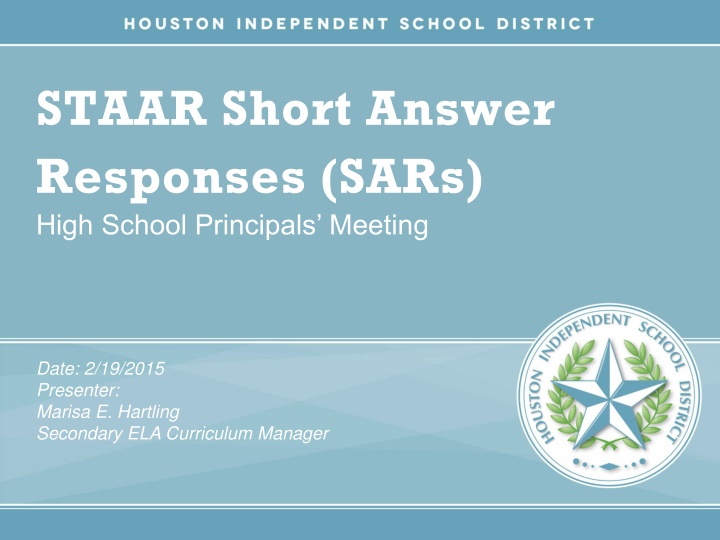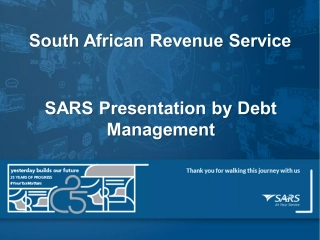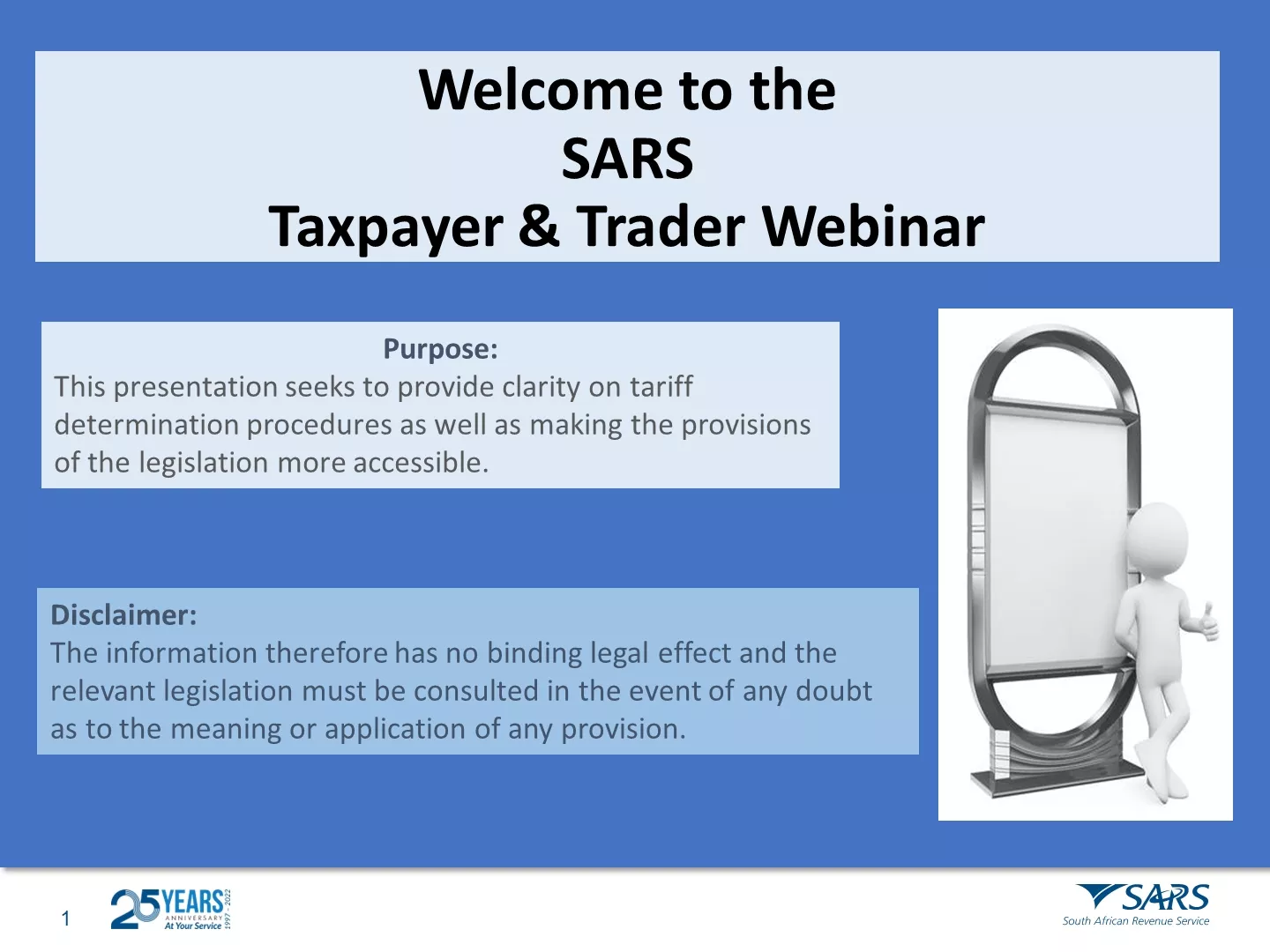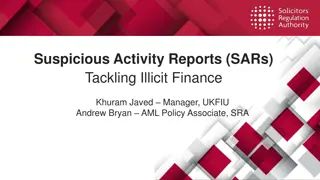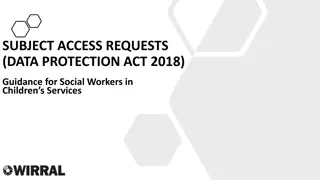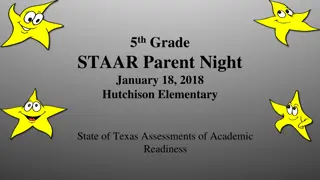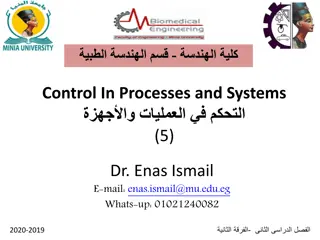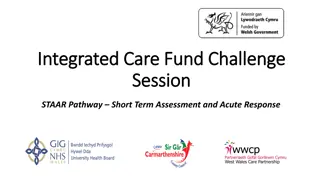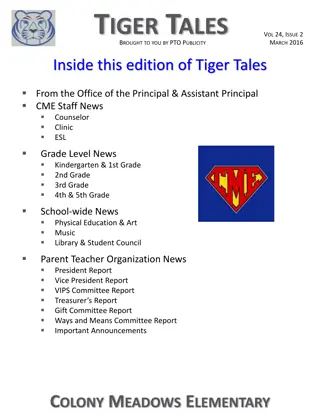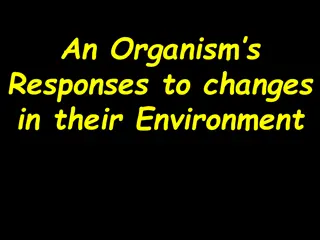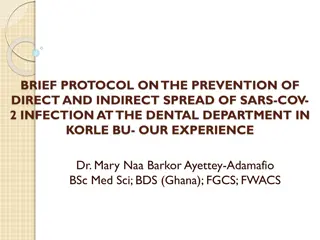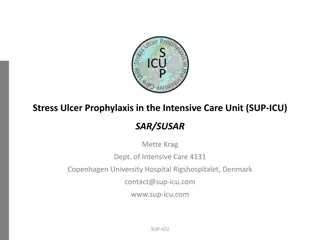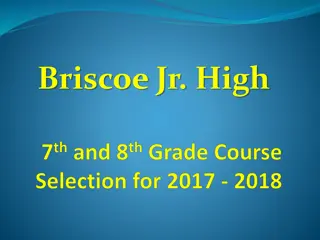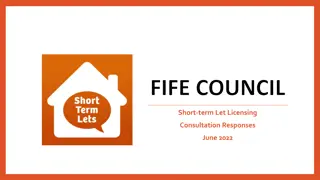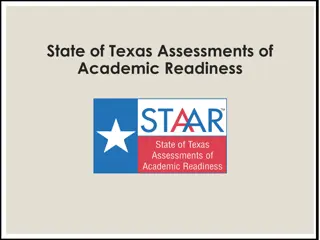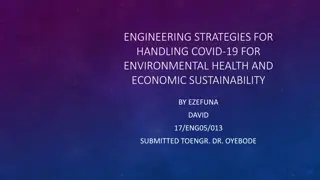STAAR Short Answer Responses (SARs)
Assessing STAAR Short Answer Responses in English I and II, this presentation covers two main components - IDEA and TEXT EVIDENCE. Explore examples of scoring and student performance, along with strategies for effective responses. Discover the importance of generating credible ideas and utilizing text evidence to enhance analysis and understanding. Gain insights into assessing reading standards and improving student performance in short answer responses.
Download Presentation

Please find below an Image/Link to download the presentation.
The content on the website is provided AS IS for your information and personal use only. It may not be sold, licensed, or shared on other websites without obtaining consent from the author.If you encounter any issues during the download, it is possible that the publisher has removed the file from their server.
You are allowed to download the files provided on this website for personal or commercial use, subject to the condition that they are used lawfully. All files are the property of their respective owners.
The content on the website is provided AS IS for your information and personal use only. It may not be sold, licensed, or shared on other websites without obtaining consent from the author.
E N D
Presentation Transcript
STAAR Short Answer Responses (SARs) High School Principals Meeting Date: 2/19/2015 Presenter: Marisa E. Hartling Secondary ELA Curriculum Manager
Short Answer Responses (SARs) English I and II STAAR/EOC contain two short answer response questions (10 lines each) Assess reading standards Account for 20% of the total score 2
Short Answer Responses (SARs) Contain two main components: 1. IDEA- Students must generate a credible idea in response to a question about a text or texts. An IDEA represents the quality and depth of the student s thinking and understanding. 2. TEXT EVIDENCE- Students must use text evidence to prove that their ideas are valid/credible. TEXT EVIDENCE substantiates the student s ideas; it reflects the degree to which the student can connect his or her own ideas with the pieces of the text that best support the analysis. 3
Try It Out Read the selection Hearing the Sweetest Songs and complete the SAR in the given space. 5
Score Point 0- Insufficient Response to the Question No response Rubric focuses on idea Idea: Does not address the question Is not based on the text Is too general, vague, or unclear Is not present or is an echo of the text 6
Score Point 0 - Insufficient Response to the Question I think the author considers herself disabled but she believes eventually everyone will have some sort of disability. She states this when she says, We re all just temporarily abled and everyone of us, if we live long enough, will become disabled in some way. 7
Score Point 1- Partially Sufficient Response to the Question Rubric focuses on deficient components of idea and text evidence Idea: Is reasonable, but contains no text evidence Is reasonable, but evidence is flawed Needs more explanation or specificity Represents only a literal reading of text 8
Score Point 1- Partially Sufficient Response to the Question In the short story, Hearing the Sweetest Songs , I think in a sense, the author knows shes disabled in her hearing but doesn t want to be treated different. She wants to be treated just like someone who is abled. I wanted to listen to Beethoven. 9
Score Point 2- Sufficient Response to the Question Rubric focuses on positive aspects of idea and text evidence Idea is reasonable and moves beyond literal interpretation Text evidence is accurate and relevant Idea and evidence are linked Idea and evidence demonstrates good understanding of the text 10
Score Point 2- Sufficient Response to the Question After reading Hearing the Sweetest Songs, I don t think the author considers herself disabled. For example when the author says, We re all just temporarily abled, and everyone of us, if we live long enough, will become disabled in some way. it shows that she believes disabilities are natural and it will happen to everyone in time. 11
Score Point 3- Exemplary Response to the Question Rubric illustrates a shift to accomplished reading Idea is perceptive and shows complexities of the text Text evidence is specific and well-chosen Idea and evidence demonstrates a deep understanding of the text 12
Score Point 3- Exemplary Response to the Question Though the author does state that she has a disability, it can still be said that she doesn t consider herself disabled. The author acknowledges having a disability by claiming that like most people with a disability, [she doesn t] mind if you ask about it. But having a disability doesn t mean she is completely disabled. She states that she is also a writer, a painter, a housekeeper and a gardener who grows wondrous roses. Though she may not be able to hear, she can still do the same things that others with hearing can. The author s lack of hearing is an important part of her and adds to her character. In her eyes, that doesn t make her believe she is disabled. 13
How Did You Do? Using the rubrics, score your partner s SAR. 14
Methods to Assist Students Reading Comprehension and Analysis Close Reading (Annotations with Symbols) Annotations Dialectical Journals Academic Discourse (Literature Circles, Socratic Seminars, etc.) 15
Methods to Assist Students Short Answer Response Construction Discussion and Analysis of Prompts Discussion of SAR Rubrics Use of STAAR SAR Box Checklists Practice Scoring Practice Revising 16
STAAR Support Explicit and embedded STAAR support in planning guides STAAR Instructional Materials on the Curriculum page STAAR Prep Writing Expository and STAAR Prep Writing Persuasive Planning Guides Writing Handbook Early Dismissal Trainings 17
Thank you Date: 2/19/15 Presenter: Marisa E. Hartling Secondary ELA Curriculum Manager
